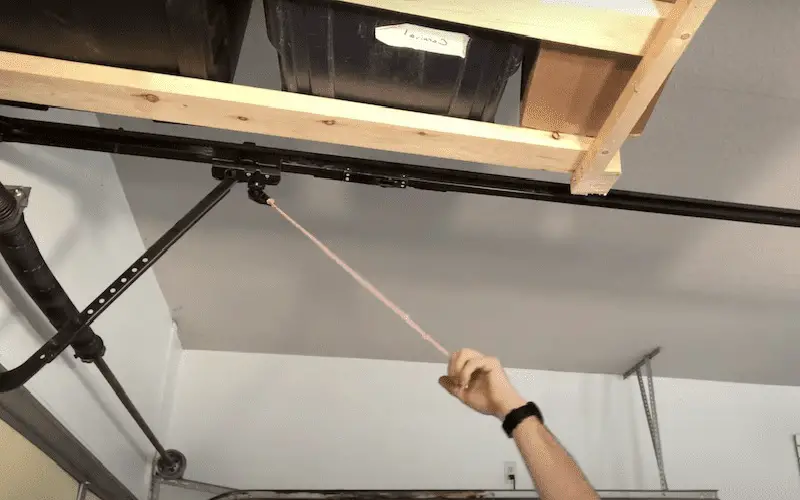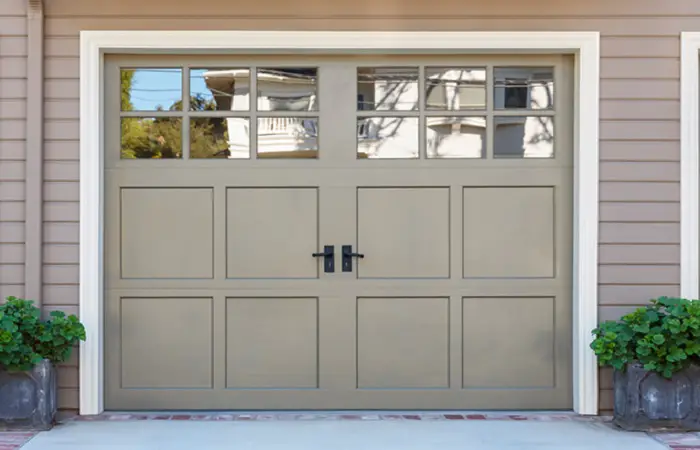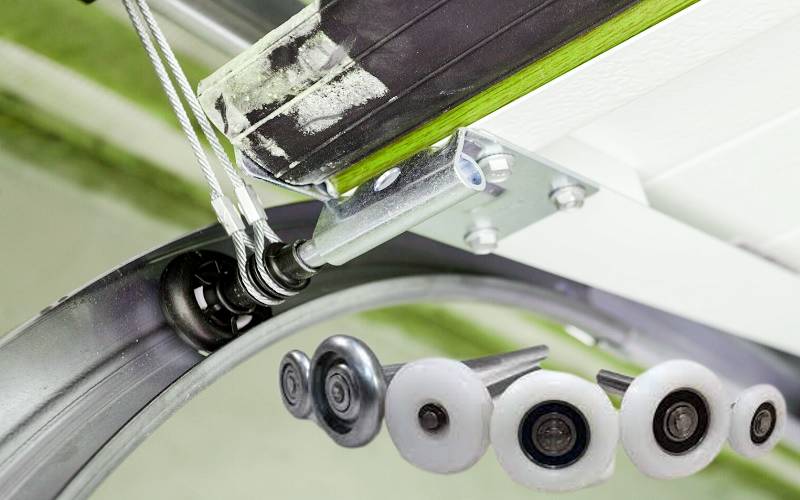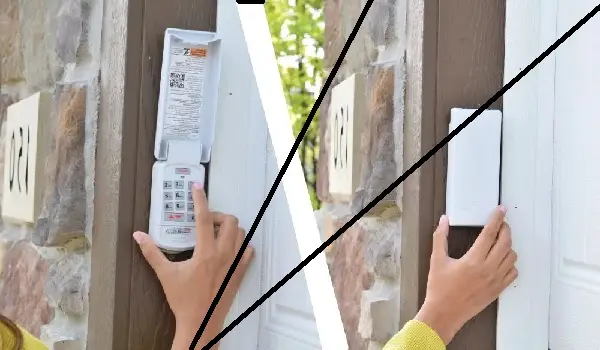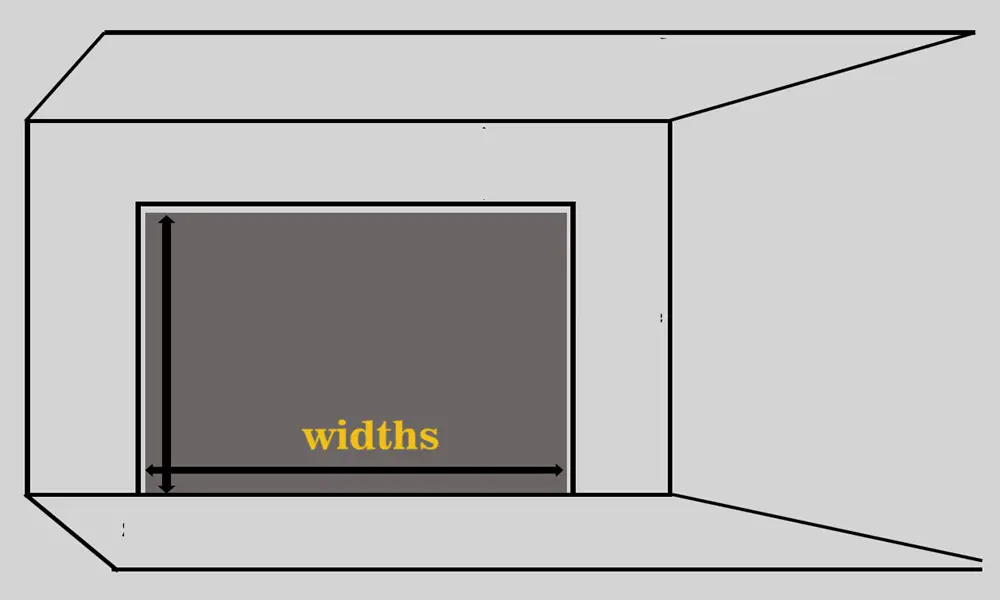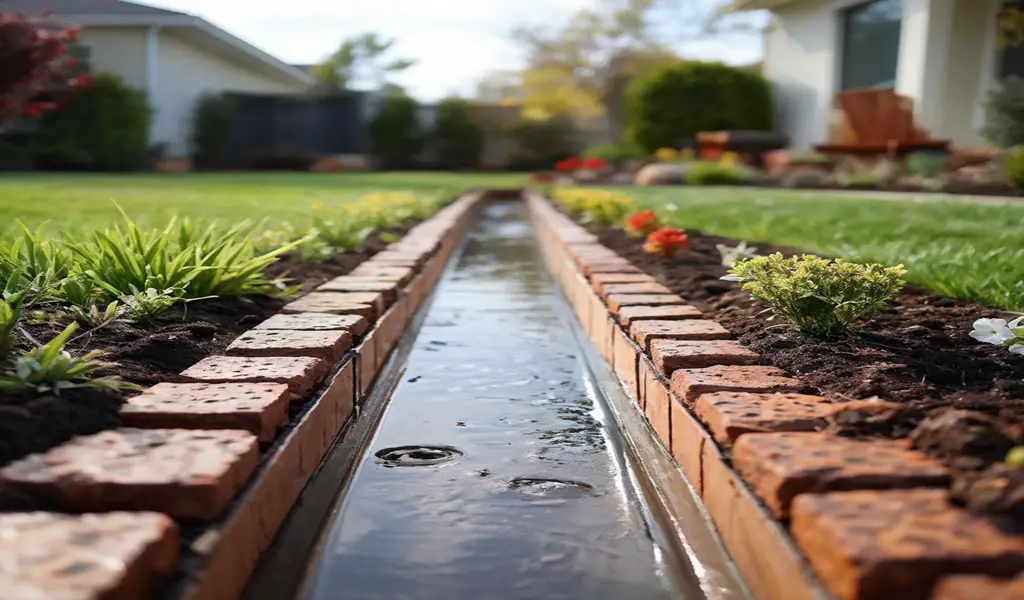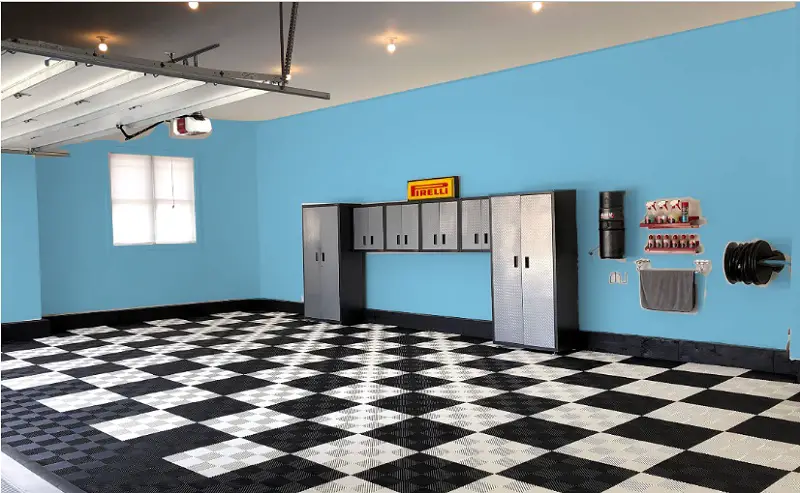Install a Cat Flap in Garage Door: Quick Guide
Cat flap in garage door In this guide, I will provide step-by-step instructions on how to easily add a cat […]

Cat flap in garage door

In this guide, I will provide step-by-step instructions on how to easily add a cat flap to garage door. This simple installation will give your feline friend convenient access to the garage while ensuring their freedom and safety. Let’s get started!
Why Install a Cat Flap in Garage Door?
Providing your cat with easy access to the garage can offer them a safe and comfortable space to explore and play. It also allows them to have a designated area for their litter box or sleeping spot, keeping it separate from your main living areas.
The Benefits of Installing a Cat Flap in Your Garage Door
Adding a cat flap to garage door can provide numerous advantages for both you and your feline companion:
- Convenience: With a cat flap installed in your garage door, your cat can enter and exit the garage as they please, saving you from constantly opening and closing the door for them.
- Freedom and Exploration: Cats are naturally curious creatures, and having access to the garage allows them to explore a new environment and engage in activities that stimulate their senses.
- Safety and Security: By giving your cat a designated space in the garage, you can ensure their safety and protect them from outdoor hazards. It also keeps them away from potential dangers in your home, such as open windows or toxic plants.
- Litter Box Placement: Having a cat flap in the garage door allows you to move your cat’s litter box to the garage, providing a more discreet and odor-free solution. This can be particularly beneficial for households where space is limited.
Creating a Cat-Friendly Environment in Your Garage
To make the garage a comfortable space for your cat, consider the following tips:
- Provide Warmth and Comfort: Set up a cozy bed or blanket in the garage where your cat can relax and sleep.
- Ensure Proper Ventilation: Install a small vent or crack open a window to ensure fresh air circulation in the garage.
- Secure Hazardous Items: Keep chemicals, tools, and other potentially dangerous items securely stored in cabinets or out of reach.
- Consider Entertainment: Include toys, scratching posts, and climbing structures to keep your cat engaged and prevent boredom.
Comparing Different Cat Flaps for Garage Doors
| Cat Flap Brand | Features | Price |
|---|---|---|
| Petsafe Freedom Aluminum Pet Door | Sturdy aluminum construction, magnetic closure, adjustable fit | $79 to $172.99 |
| SureFlap Microchip Cat Flap | Microchip recognition, selective entry, robust locking mechanism | $100 to $200 |
| Cat Mate Elite Microchip Cat Flap | Microchip recognition, timer control, dual lock mechanism | $120 to $200 |
When selecting a cat flap for your garage door, consider factors such as pricing, features, and compatibility with your cat’s microchip or collar tag.
Choosing the Right Cat Flap for Your Garage Door
When it comes to selecting a cat flap for your garage door, not all options are created equal. To ensure the utmost convenience, comfort, and security for your feline friend, it’s important to choose the best cat door for your garage. Here are some key factors to consider:
1. Size:
First and foremost, consider the size of your cat flap. You want to ensure that it is suitable for your cat’s size and allows them to enter and exit the garage comfortably. Measure your cat’s dimensions and choose a cat flap that accommodates their size.
2. Security Features:
Safety is paramount, so opt for a cat flap that comes equipped with secure locking mechanisms. Look for features such as magnetic closures or microchip recognition technology to ensure that only your cat can access the garage through the cat flap.
3. Insulation:
Garages can be prone to temperature fluctuations, so it’s important to choose a cat flap that offers insulation. Look for options with weatherproof seals and insulating materials to keep the garage comfortable for your cat throughout the year.
4. Durability:
A cat flap for your garage door should be built to withstand regular use and the elements. Look for a sturdy construction that can handle everyday wear and tear, ensuring long-lasting functionality.
5. Easy Installation:
Opt for a cat flap that is designed specifically for installation in a garage door. These cat flaps often come with clear instructions and the necessary hardware for a straightforward installation process.
By considering these factors and choosing a cat flap that meets your cat’s needs, you can ensure a secure and convenient access point for your furry friend in your garage.
Preparing Your Garage Door for Installation
Before installing a cat flap in your garage door, it’s important to make some preparations to ensure a smooth and successful installation. By following these steps, you’ll create an ideal environment for your furry friend to come and go as they please.
- Clean the area: Begin by cleaning the area where you plan to install the cat flap. Remove any dirt, debris, or obstructions that may interfere with the installation process.
- Measure and mark: Measure the desired position for the cat flap on your garage door. Take into consideration your cat’s height and make sure the opening is at a suitable height for them to enter and exit comfortably. Use a marker to clearly mark the position.
By cleaning the area and marking the position, you’ll create a clean and accessible space for the cat flap installation. This will ensure a seamless transition for your cat and make their experience with the cat flap more enjoyable.
Gathering the Necessary Tools and Materials
To successfully install a cat flap in your garage door, you’ll need a few essential tools and materials. It’s important to ensure you have everything you need before starting the installation process. Here’s a list of what you’ll typically require:
- Marker
- Measuring tape
- Drill
- Screws
- Screwdriver
- Cat flap
Having a marker will allow you to mark the position for installation accurately. The measuring tape is crucial for measuring the appropriate height for your cat flap. A drill and screws are necessary for securing the cat flap in place, ensuring it is securely attached to the garage door. Lastly, a screwdriver is required for tightening the screws and making any necessary adjustments during the installation process. Of course, you’ll also need the cat flap itself, which is available in various sizes and designs to suit your cat and garage door.
Remember to gather all these tools and materials beforehand to make the installation process smooth and efficient.
Installing the Cat Flap in Your Garage Door
Now it’s time to start the installation process. Follow the manufacturer’s instructions for your specific cat flap model, but generally, here are the steps to install a cat flap in your garage door:
- Mark the drill holes: Use a marker to mark the positions of the drill holes on your garage door. Ensure that the marks are level and aligned properly.
- Drill pilot holes: Use a drill with an appropriate drill bit to create pilot holes where you marked them. Pilot holes will make it easier to insert the screws later.
- Secure the cat flap: Line up the cat flap with the pilot holes and insert the screws provided by the manufacturer. Make sure the cat flap is straight and securely attached to the garage door.
Take your time during the installation process to ensure that everything is done correctly. It’s important that the cat flap is securely attached to the garage door to prevent any accidents or damage.
Testing the Cat Flap and Making Adjustments
Now that the cat flap is installed in your garage door, it’s time to ensure that it functions properly and provides a comfortable entry and exit for your cat. Testing its functionality and making any necessary adjustments will ensure a smooth and hassle-free experience for your feline friend.
The first step in testing the cat flap is to encourage your cat to approach and go through the door. Gently encourage them with treats or toys to entice them to explore the new access point. Observe their behavior as they interact with the cat flap, making note of any hesitations or difficulties they may encounter.
If you notice any issues, such as your cat struggling to enter or exit the cat flap or the door not swinging freely, adjustments may be necessary. One common adjustment is to ensure that the cat flap is installed at the appropriate height for your cat. A cat flap that is too high or too low can make it challenging for your cat to use comfortably.
Additionally, check that the door swings freely without any obstructions. A smooth and unrestricted movement is crucial to making your cat feel at ease while using the cat flap. It’s also important to ensure that the cat flap securely closes after your cat passes through to maintain the insulation and security of your garage.
By making these adjustments, you can create an optimal entry and exit point for your cat. The goal is to provide a seamless experience that allows them to come and go as they please, giving them the freedom and independence they desire.
Ensuring Safety and Security for Your Cat
While installing a cat flap in your garage door provides convenient access for your feline friend, it’s essential to prioritize their safety and security. Regular maintenance and additional security measures can ensure a worry-free environment for your cat. Here are some tips:
Regular Inspection
It’s important to regularly inspect the cat flap for any signs of damage or wear. **Check for** any cracks, loose screws, or broken parts that could compromise the functionality of the cat flap. Addressing these issues promptly will help maintain a secure entry **point** for your cat.
Consider Additional Security Measures
For added peace of mind, consider installing a lock or an electronic cat door. A lock can limit access to the cat flap, preventing unwanted animals or intruders from entering your garage. An electronic cat door, operated by your cat’s microchip or collar tag, ensures only your cat can enter and exit the garage through the cat flap.
Maintaining Privacy
If you have concerns about privacy or unwanted visitors accessing your garage through the cat flap, consider a cat flap with privacy features. Some cat flaps come with additional panels or covers, allowing you to control when the cat flap is open or closed.
Training and Supervision
While the cat flap provides your cat with freedom, it’s important to ensure they are comfortable using it. **Patience and training** can help them adjust to the new access point. Encourage your cat to use the cat flap by offering treats or toys, and praise them when they successfully navigate through it. **Keep an eye** on their initial experiences to ensure they feel secure and confident using the cat flap.
Maintaining a Secure Garage
Remember to evaluate the overall security of your garage, in addition to the cat flap. Ensure windows and other entry points are secure to prevent any unwanted access. Regularly check for any potential hazards or toxic substances that could harm your cat.
| Security Tips for Your Cat’s Garage Access |
|---|
| Regularly inspect the cat flap for damage or wear. |
| Consider installing a lock or an electronic cat door for added security. |
| Choose a cat flap with privacy features if desired. |
| Be patient and train your cat to use the cat flap. |
| Maintain overall garage security to keep your cat safe. |
Encouraging Your Cat to Use the Cat Flap
Getting your cat accustomed to using the cat flap can be a gradual process that requires time and patience. Here are some tips to help encourage your furry friend to use their new access to the garage.
- Use Positive Reinforcement: Encourage your cat to approach the cat flap by using treats or toys. Place their favorite treats or toys near the cat flap or inside the garage to create a positive association.
- Offer Praise and Affection: When your cat successfully navigates through the cat flap, reward their behavior with plenty of praise and affection. Let them know how proud you are and reinforce the idea that using the cat flap is a positive experience.
- Avoid Forcing or Negative Reinforcement: It’s important not to force your cat through the cat flap or use any negative reinforcement techniques. This can create fear and anxiety associated with the cat flap, making it less likely that your cat will use it willingly. Patience and positive reinforcement are key.
- Observe and Assist: Spend some time observing your cat’s behavior around the cat flap. If they seem hesitant or unsure, gently guide them through the door by holding it open or using treats as a lure. Over time, they will become more comfortable and independent in using the cat flap.
Remember, every cat is unique, and the time it takes for them to become comfortable with the cat flap may vary. Be patient, consistent, and supportive throughout the process, and soon your cat will associate the cat flap with freedom and independence.
Cat Flap Transition Tips:
If you’re still having trouble encouraging your cat to use the cat flap, here are a few additional suggestions:
- Keep the Garage Appealing: Make the garage an enticing space for your cat by providing cozy bedding, toys, scratching posts, and their litter box. This will encourage them to explore and spend more time in the garage.
- Use Familiar Scents: Rubbing a cloth or towel on your cat’s favorite sleeping spots or their scratching posts and then placing it near the cat flap can help in familiarizing them with the scent and associating it with comfort and security.
- Monitor Outside Encounters: If your cat is nervous about encountering other cats or animals outside, consider supervising their initial ventures through the cat flap. This way, you can ensure their safety and provide reassurance as they explore their newfound outdoor access.
With patience, positive reinforcement, and a little bit of time, your cat will soon embrace their new cat flap and enjoy the freedom and convenience it provides.
Maintenance and Care for Your Cat Flap
Regular maintenance is key to ensure the longevity of your cat flap and provide continued comfort for your cat. Follow these simple steps to keep your cat flap in optimal condition:
Clean the Cat Flap Regularly
To maintain a clean and hygienic cat flap, regularly remove any debris or buildup that may accumulate over time. Use a soft cloth or brush to gently clean the surface and ensure your cat’s passage remains unobstructed.
Lubricate Moving Parts
To keep the cat flap operating smoothly, lubricate the moving parts as recommended by the manufacturer. This will prevent any friction or sticking that may impede your cat’s access. Choose a pet-friendly lubricant and apply it according to the instructions provided.
Inspect for Wear or Damage
Regularly inspect the cat flap for signs of wear or damage. Check the hinges, locking mechanism, and overall structure for any loose or broken components. If you notice any issues, take the necessary steps to repair or replace the damaged parts to maintain the security and functionality of the cat flap.
Replace Any Worn-out Parts
Over time, certain parts of the cat flap may undergo wear and tear. It is important to replace any worn-out parts to ensure the proper functioning of the cat flap. Consult the manufacturer’s instructions or contact their customer service for assistance in obtaining the appropriate replacement parts.
Regularly Test the Cat Flap
Periodically test the cat flap to ensure it opens and closes smoothly. Observe your cat’s interaction with the cat flap and look for any signs of hesitation or difficulty. Make any necessary adjustments, such as adjusting the height or tension, to ensure a comfortable and effortless entry and exit for your cat.
| Maintenance Checklist: | Frequency |
|---|---|
| Clean the cat flap | Weekly |
| Lubricate moving parts | Every 3 months |
| Inspect for wear or damage | Monthly |
| Replace worn-out parts | As needed |
| Test the cat flap | Every 6 months |
By following these maintenance guidelines, you can ensure that your cat flap remains functional, secure, and provides a reliable access point for your beloved feline companion.
Additional Considerations for Your Garage Door with Cat Flap
If you have an automatic garage door opener, it’s important to consider how the installation of a cat flap may impact its operation. While some garage doors are compatible with cat flaps, others may require additional adjustments or a separate entry for your cat. Consulting your garage door manufacturer or a professional can help ensure a smooth integration of the cat flap into your garage door system.
When installing a cat flap in your garage door, it’s crucial to maintain the insulation and security of your garage. Ensure that the cat flap is properly sealed and doesn’t compromise the insulation properties of the door. Additionally, choose a cat flap that provides adequate security measures to prevent unauthorized access to your garage.
Automatic Cat Door Systems
For households with an automatic garage door opener, there are specially designed automatic cat door systems available. These systems allow your cat to enter or exit the garage without interfering with the operation of the garage door. Automatic cat door systems typically use sensors to detect the presence of your cat and open the door accordingly.
When considering an automatic cat door system, make sure it is compatible with your garage door opener and consult the manufacturer for installation instructions. These systems offer a convenient and hassle-free way to provide your cat with access to the garage while ensuring the security and functionality of your garage door.
Ensuring a Smooth Transition
Introducing a cat flap in your garage door may require some adjustment for your feline friend. Cats are known for being cautious when encountering new things, so it’s important to make the transition as stress-free as possible. Encourage your cat to use the cat flap by placing treats or toys on the other side to entice them. Take your time and be patient as your cat becomes accustomed to the new entryway.
Regularly observe your cat’s behavior when using the cat flap and address any issues or concerns promptly. Make sure the cat flap is of an appropriate size and height for your cat to comfortably enter and exit the garage.
Conclusion
Adding a cat flap to your garage door can be a game-changer for both you and your furry friend. With a cat flap in your garage door, your cat can enjoy easy access to a safe and comfortable space whenever they please. The installation process, as outlined in this guide, is simple and straightforward, ensuring a successful outcome.
By following the steps and considering the tips provided, you can create a convenient cat entry door for your garage that will enhance your cat’s quality of life. Watch as your feline friend explores their newfound freedom and independence, using the cat flap to come and go as they please.
Take pride in providing your cat with a dedicated space that is separate from your main living area. Your cat will appreciate having their litter box, favorite sleeping spot, or play area right in the garage. Plus, the cat flap also gives them the opportunity to enjoy some fresh air and natural sunlight.
So, don’t hesitate to install a cat flap in your garage door. It’s a small investment that offers a big reward in terms of your cat’s happiness and well-being. Give them the gift of a garage cat door and let them discover a whole new world right in your garage!
